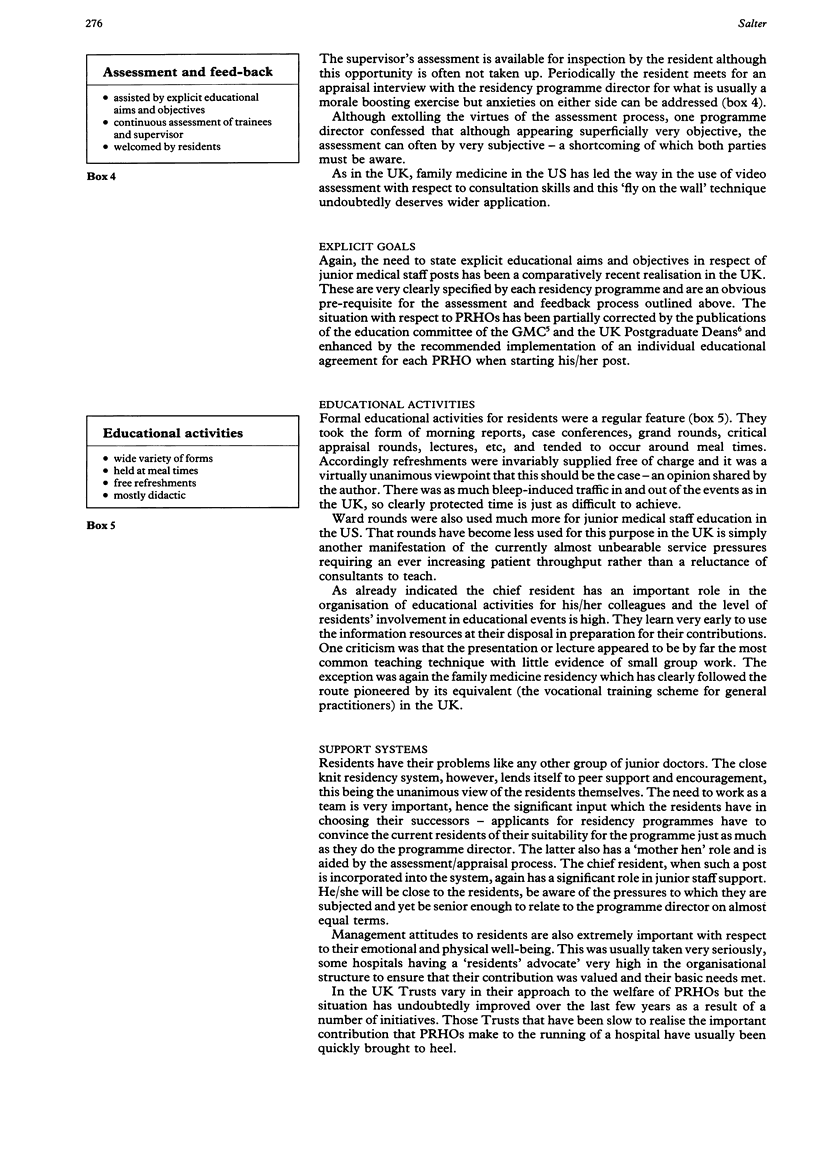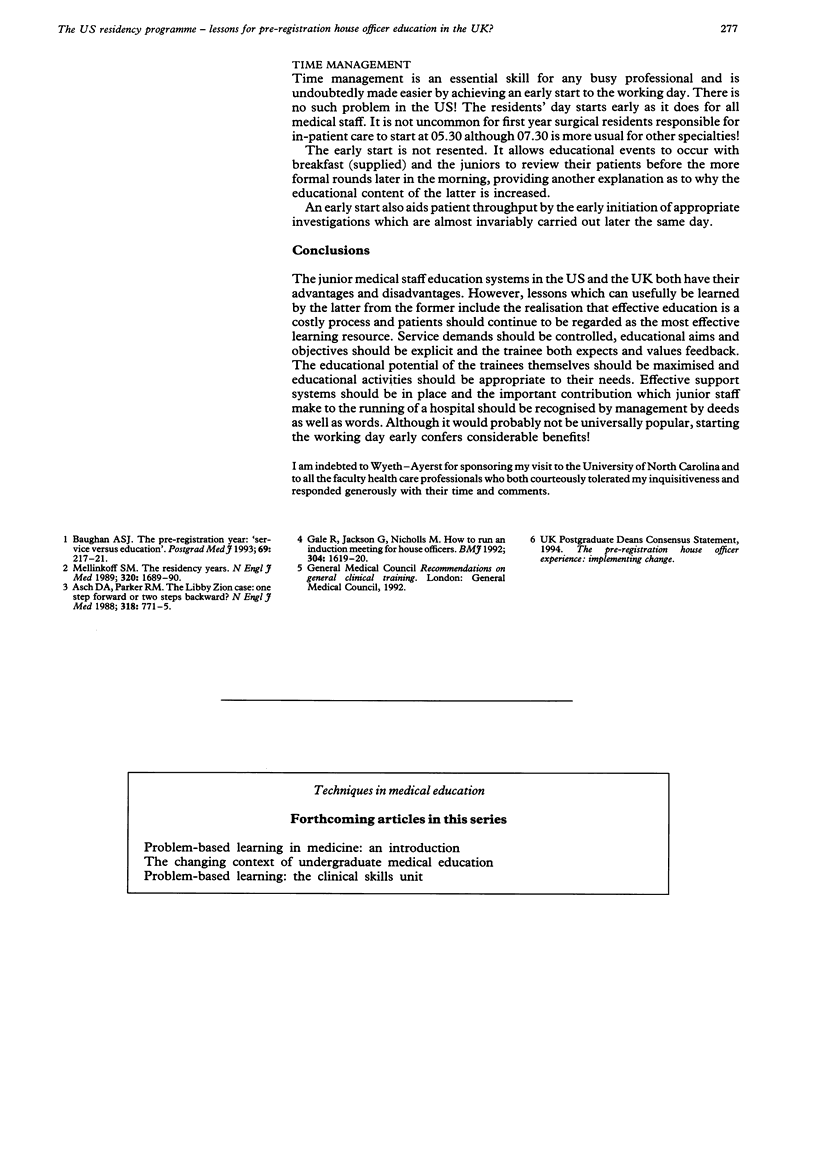Abstract
The 1994 NACT Wyeth-Ayerst Travelling Fellowship provided the opportunity to compare the education and welfare of pre-registration house officers in the UK with their nearest counterpart in the US residency system. Investment in all aspects of learning was impressive, as was the retention of the central role of the patient in education. Adequate clinical exposure must take into account both the changing pattern of care delivery and the need to limit junior doctors' hours of work. Service containment is difficult to achieve. The self-educating potential of junior medical staff should be maximised and a post analogous to 'Chief Resident' in the US could be considered. Explicit educational aims and objectives must be stated so that meaningful assessment can be carried out and feedback provided. Adequate support systems are essential and an earlier start to the working day is encouraged.
Full text
PDF




Selected References
These references are in PubMed. This may not be the complete list of references from this article.
- Asch D. A., Parker R. M. The Libby Zion case. One step forward or two steps backward? N Engl J Med. 1988 Mar 24;318(12):771–775. doi: 10.1056/NEJM198803243181209. [DOI] [PubMed] [Google Scholar]
- Gale R., Jackson G., Nicholls M. How to run an induction meeting for house officers. BMJ. 1992 Jun 20;304(6842):1619–1620. doi: 10.1136/bmj.304.6842.1619. [DOI] [PMC free article] [PubMed] [Google Scholar]
- Mellinkoff S. M. The residency years. N Engl J Med. 1989 Jun 22;320(25):1689–1690. doi: 10.1056/NEJM198906223202510. [DOI] [PubMed] [Google Scholar]


